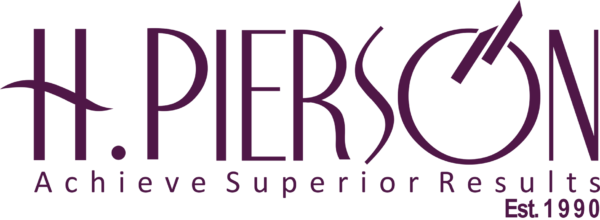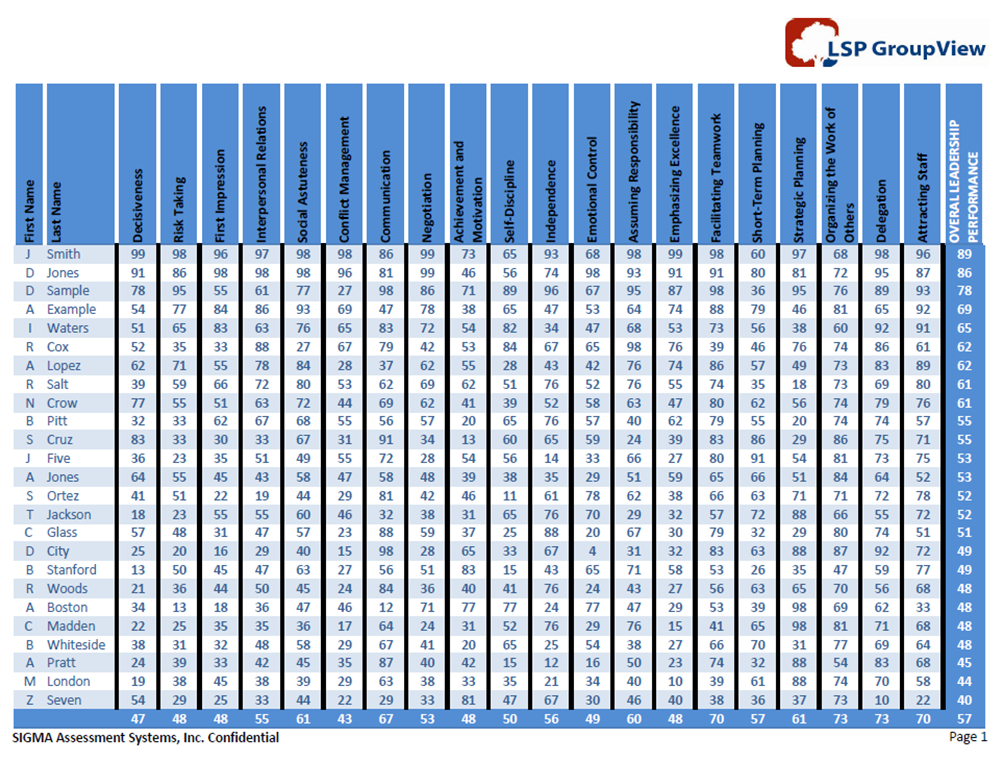The topic of “Corporate Governance 2030” might encourage wild speculation in this period of great, some would say, epochal change. Some might see the demise of the corporation; others, the emergence of new organizations with intelligent robots playing the role of boards. And so on and so forth. The truth is that 12 years is not such a long time. Heuristically turning to the past 12 years, one sees that the changes in corporate governance have been relatively limited. Only in the banking sector have there been any truly significant changes. These were not the result of a huge technological disruption but of a crisis: the most common reason to change corporate governance expectations, regulation and practice. One should therefore expect limited change. But change there will be, and it will be mainly driven by four key drivers: diversity, disclosure, data and Development Financial Institutions (DFIs)
Context
Many commentators and pundits have been making predictions about a radically different corporate landscape than the one we are facing today. These predictions have been around for a while: the information and communications revolution was supposed to usher an era of smaller, more nimble companies with very few employees scattered around the world, facing millions of very well-informed rational consumers who buy on the web and can manage endless choice. These nimble supply players can change game plans at the speed of light. Their strategic decisions are not the result of hierarchy-bound iterations as in classic corporations. Rather, they emerge through some sort of networking osmosis.
This has not happened yet, and it might take a long while before it is really upon us, longer than 12 years. It might be true that companies in the ITC sector employ fewer people than old world companies, while enjoying vastly higher valuations and therefore market capitalizations. It might also be true that the information revolution has brought about a significant change in the pecking order of sectors. And AI is already changing significantly the tasks of human workers—and replacing many of them.
But wholesale corporate decentralisation has not happened: industrial concentration levels, if anything, have increased, largely as the result of powerful network effects, facilitated by an efficient merger “food chain”; which, in its turn, is efficiently intermediated by the capital markets. There are still small, medium and large businesses, and there is no indication that they will use boards less or in significantly different ways than their predecessors. The only thing that has probably changed is the funding of it all—the “food chain” works differently: it is now less about public equity markets and more about private flows of capital.
Where there were once IPOs now there are efficient private markets. The UK has now only about half the listed companies it had twelve years ago.
Much of the what this blog discusses is about emerging markets (EMs) and the often smaller, private companies that populate them. For them, the development of private markets is actually a very good thing. Most of these enterprises will benefit from the fact that capital markets are more comfortable and can more efficiently fund privately-owned businesses. The new “food chain” might present an opportunity to smaller, private businesses wherever they may be. For EMs this might translate into a chance to leapfrog developed economies.
Like everywhere else, technology might create significant, and disruptive opportunities in EMs, especially in sectors such as banking and payment systems. But EMs’ key competitive advantages will still be driven by traditional sectors where labour cost advantages are more important than opportunities for labour substitution. But even in those sectors where technology will play an increasingly significant role, the key issue of trust in a company and its institutional framework will not disappear. So, do not expect a change in the role of corporate governance as a generator of trust.
There is an important caveat. My thoughts are based on, some will say, bold assumption that the long-standing trend of global economic and regulatory convergence will continue. This convergence started a few decades ago and was framed by an international cooperation framework established after the second world war. As we all know these arrangements are now facing significant headwinds, probably stronger than at any other time in the last 80 years. My assumption is that what we are currently witnessing in geopolitical and international economic relations is a backlash, not a total collapse of that framework. If it is the later, then many of the points raised in this blog post might become irrelevant.
So, there will be changes in governance over the next twelve years in EMs and elsewhere; and sometimes they will be significant, albeit not earthshattering. Their drivers can be summed up under four broad headings: diversity, disclosure, data and DFIs.
Diversity
Diversity of all kinds and at all levels, is one of the most pervasive trends of the new millennium—a child of globalization and convergence, but also of deep structural change in Western societies.
In the governance sphere, we speak about diversity mostly in the gender context. This is a very important subject and we are probably just at the beginning of a new social paradigm. What is happening in the West is setting the tone elsewhere—almost everywhere. This trend will increasingly impact private businesses across EMs, even in the most conservative places. Increasingly more young women in the elites will be educated just like their brothers. This will probably accelerate changes throughout society.
But diversity is much more than gender. And I will use it in this very broad sense of maximizing the number of different perspectives around a decision-making table—the board.
In fact, boards were invented for diversity purposes: we want different voices around the table, not one king (or, rarely, a queen) who takes all decisions unchallenged. The wise drafters of 19th century company laws did not have mental categories for “group think” and formulation or availability biases; but they could see that managing other people’s money (as Adam Smith put it) required more than a king-like powerful individual, no matter how honest or intelligent.
Of course, a basic common understanding of the business at hand is required around the table, and the more complex the business, the more this understanding comes at a premium. But the more diverse the people around the table are, the more likely the board is to avoid the trap of such biases when delivering productive, challenging, rounded, and balanced guidance.
Until now typical public company (Plc) boards were populated by executives of other companies, a distinct group with a lot of business and organizational experience but often facing perverse incentives. Family companies were often crowded with (what else?) family members. And start-up boards were often an incest ground for a few, very experienced and influential VC representatives with extensive cross-directorships.
I truly believe that we are entering the age of diversity, in this broader sense. Even the patriarchal families of the most conservative of EMs are beginning to understand this and invite outsiders to counsel them. Founders of small businesses understand that access to capital comes from inviting others to the decision-making table: these others bring diversity and diversity brings comfort all around.
But who are these others? In the core OECD markets a new breed of director is emerging and they are all about diversity. In fact, diversity is at the core of their career path. I call them the “portfolio directors”, some call them professional NEDs. Portfolio directors will increasingly be used in all types of companies, from the large PLCs (where their presence is already significant) to the small EM family businesses, often with the help of DFIs, the fourth driver. This latter trend is still in its incipiency but will grow significantly over the next 12 years.
The currency of portfolio directors will be their proven capacity to challenge constructively, which would be demonstrable through a successful track record as NEDs, not as executives in other businesses. Demonstrability will be based on the availability of data—the third driver. Discoverability of past performance will make NEDs less prone to being lapdogs of the controllers. We are not there yet, but this is an area where 12 years might make a lot of difference.
Currently, a phenomenon that is common in both the new age tech companies of Silicon Valley and the traditional family businesses in EMs is the presence of a King—an ultimate controller who can take decisions at will and for whom the board is either a legally imposed nuisance or a bunch of cheerleaders. Indeed, how is a Malinois or Peruvian business patriarch different from Mike Zuckerberg or Elon Musk? Well, their boards are full of the great and good and they are diverse, but only in terms of gender and, possibly, ethnicity. This is a step above than the patriarchs’ board of children, cousins and personal lawyers/consultants. But the reality of Big Tech leaves a lot to be desired: armed with multiple voting rights the Silicon Valley “kings” want boards to be “story tellers”—rather than drivers of challenge. Each one of these directors is hand-picked by the king and serves at the king’s mercy.
A better example of public market governance in the tech sector might come from the largest emerging market, China. Jack Ma has eased himself (and many of the first-generation executives) out of the well-known company he created less than two decades ago, Ali Baba. A couple of years ago, he relinquished the CEO position keeping the chairmanship. Now he has announced that he will be leaving the board all together. Compared to the Silicon Valley kings, he looks more like the Good Shepperd.
Reassuringly, most founders of tech start-ups that IPO in the US show the behavior of Jack Ma rather than that of the “kings”, as recent research suggests. Most of these companies have already lost their founder from their board when they went public—not everyone wants to be king forever. This might however also be because companies take longer to IPO in recent times. The private part of the “food chain” is, these days, longer and often permanent. Let us consider one of its great constituents, the “unicorn” Uber.
In many respects “King” Kalanick was like the rest of his Silicon Valley peers—a big, intelligent ego, armed with significant multiple voting rights. But when he fumbled, he was driven out. His nemeses were not “independent” directors but representatives of significant shareholders, other than himself. Their voice was backed by the credible threat of loss of market confidence and impaired access to capital. I do believe that the private investment “food chain” that we discussed earlier, as opposed to the public route, has delivered such powerful, engaged shareholder directors, and will increasingly do so in the future. Unlike the public markets where boards essentially co-opt themselves, in the private equity context it is the shareholders, often several of them, who appoint the board. The principal-agent problem is less pronounced; hence governance risk is less acute. And as private finance becomes more and more ubiquitous in both core OECD and EM markets, the delivery of challenge in the private company board room will grow.
There is one more aspect of board room diversity that I would like to touch upon. Like in the case of multiple shareholder representation, it is more about the diversity of interests that the board focuses on rather than the diversity of its members. In other words, the importance of stakeholders is increasing and will increase even more in the coming 12 years. In some countries, like Germany, this has long been the status quo. But stakeholder power is now a prominent feature of corporate governance reforms in many countries. Germany is becoming a beacon for some important corporate governance reforms in other countries. Even the UK, the European bastion of shareholder value, has this year revised its venerable CG Code, the oldest of its genre in Europe, to include specific responsibilities for the board with regards to stakeholders. Boards now must consider employees and other stakeholders views when developing strategy and compensation plans and need to establish communication lines with their workforce. The era of unadulterated shareholder value that started in the 80s seems to be behind us. The markets are acknowledging this, albeit quite clumsily, through the rise and “mainstreaming” of Environmental, Social and Governance (ESG) screening and integration, and of “impact” investing. The pressure from investors will only encourage boards to consider stakeholder perspectives, even worker participation looks now like a distinct possibility in the UK.
But none of these trends could be sustained and become the future without disclosure.
Disclosure
First, I believe that, the core OECD public markets suffer from a saturation of disclosure requirements —there is too much, not too little of it. The number of pages in the annual reports of UK FTSE 300 companies have on average more than trebled in the last 20 years. Investors have probably more information than they can use, and often the forest is lost to the trees.
But the focus of this post is not about disclosure in the public markets, where we might in fact see some retrenchment over the next twelve years, first and foremost on the need for quarterly reporting. The focus is rather on two different issues: changes in governance disclosures in EMs; and the beneficial impact of disclosure practices in OECD public markets on disclosure trends and culture in private markets. The gist is that the amount of disclosure in OECD public markets as well as the corporate and investor cultures that have developed around these disclosures are generating positive externalities for EMs and privately-owned companies in all markets. These two directional trends can be demonstrated by developments in two areas.
The first area is that of corporate governance codes, more specifically the structure and implementation mechanisms for these codes in emerging markets. All corporate governance codes claim the UK Code as their ancestor. But many of them, especially in EMs, do not possess one of its core features: the comply-or-explain mechanism, which allows companies to comply with quite specific provisions of a factual, binary nature; or to explain why they do not comply with such provisions. The primary purpose of the comply-or-explain approach is to increase disclosure of governance practices in the market. By asking companies for a simple “yes” or “no” on their compliance with a very specific provision and by making their response an obligatory disclosure item, the Codes render governance arrangements of individual companies transparent to the market.
In contrast, in EMs one would all too often find Code provisions that are ostensibly comply-or-explain, but in practice yield little transparency about real governance practices among the local listed population. There are at least two reasons for this: first, their provisions are often too general with a response requiring a judgement rather than a statement of fact. For example, if the provision is that “the board has to function effectively”, everyone can and will respond in the affirmative, and such an affirmative response cannot be realistically challenged. Second, provisions are often synthetic and cannot be effectively answered in a binary fashion: for example, “a majority of directors should be independent and competent”.
Until now, the objectives of policy makers in many EMs (and several OECD countries) was primarily to educate local companies on best practice through CG codes rather than to increase transparency in the market. This has started to change. My company, Nestor Advisors, has been involved with the support of the EBRD in efforts in Russia and Turkey to restructure Codes towards more disclosure-friendly formats; and to ensure that there is an efficient, user-friendly disclosure system to effectively get the information out to the market.
The many enemies of transparent markets have been saying that disclosure-focused CG regimes are fit for only those markets that have an able, sophisticated buy-side population. This is, nonsense. More transparency in the public market benefits first and foremost lest developed EM and frontier markets; it attracts investors who might not enter without some platform that provides credible non-financial information. Such a platform might in fact make all the difference. What is more, it provides the right signal; good CG information underpins credibility of financial information, and vice versa.
Coming to the same directional trend, the adoption of public market CG disclosure norms by private companies has been increasing in several “core” OECD markets. I believe this will become a growing trend in the next 12 years as private markets continue to attract more and more diverse investors, with some private companies becoming effectively quasi-public. This is a trend that is likely to reach EMs, especially if DFIs actively support it. In EMs, the emergence of a culture of disclosure generates significant positive spill-overs on the rest of the economy, boosting the goodwill of various stakeholders on whose good faith companies often depend.
Moreover, disclosure usually begets more disclosure. As disclosure becomes richer, boards, shareholders and stakeholders want a more holistic understanding of the business they are involved with. Propelled by failure and crises, the knowledge and understanding of the “culture” of the individual companies is increasingly coming within the sights of boards and stakeholders.
Starting with the financial sector, understanding the culture of a company is becoming increasingly a best practice requirement for boards. I am convinced that within the next 12 years, cultural “audits” will become the norm for larger companies.
So, are boards, shareholders and stakeholders interested in culture for the same reasons that Claude Levi-Strauss was interested in the culture of the Yanomami tribe in the Amazon? Maybe not exactly, but their reasons might not be not be as different as one would expect. Culture is important in companies because, apart from policies and procedures, it influences the way people understand their surroundings and, most importantly behave towards them. Just like Levi-Strauss, corporate leaders are interested in what drives people (in corporations and in tribes) to do things in certain ways; in what way “structure” may underpin behavior that in its turn produces goods/artefacts but also, ultimately a perception of the world, values.
It is said that culture is how people do things when no one is looking.
A related reason that culture is important was eloquently stated by the eponymous Peter Drucker. He famously said that “Culture eats strategy for breakfast”. Meaning that organizations, inhabited by humans, will always do what they feel comfortable with instead of what they planned and documented on a piece of paper.
Cultural audits, as increasingly practiced by banks in the UK and elsewhere, depend on the availability of various pieces of information about governance practice and process, but also on other indicators such as customer and employee satisfaction surveys. All of these constitute elements of an elaborate system of internal and external “disclosure”. Cultural audits will not only be relevant to banks and large listed companies: some banks are already reflecting on how to develop “red flags” for their clients, often SMEs. Indicators might include things such as big differences in pay between the boss and the employees, high turnover of management, “staleness” of boards (age, same people around the table for a long time). Whether as an element of credit assessment or of an inevitability/due diligence test, these cultural audits will depend on the availability of data.
Data
Data, the third driver, will increasingly fuel developments in the other three areas discussed in this post. As noted above, a key element of technology-driven disruption in many sectors is the availability of “big” data allowing companies to find niches and price their products with unprecedented precision. Such data will also help identify risks with a granularity that was not hitherto available to providers of equity and debt capital.
In the governance space, work is already under way. And while today data provision is focused on governance of banks (such as in the case of Aktis, a data provider that I chair) or large listed companies (such as in the case of Sustain analytics or ISS) all existing data providers are considering ways to acquire, aggregate/anonymize and serve back governance data from and to private companies, providing benchmarking but also measurable “rankings” to potential investors.
The availability of data will also have a profound impact on the way boards work: for example, as compliance becomes automated, compliance data and logs will become a source of oversight for audit committees. Expanded use of board portals which are becoming the norm in many OECD core markets, will also provide board directors with better opportunities for deep dives into a company’s policy and control environment.
DFIs
I truly believe that in EMs, especially in frontier markets, the recent DFI commitment to actively seek better governance, a “conversion” of almost of Damascene proportions, has become a significant driver of change and will become more so over the next twelve years. IFC was certainly a trailblazer in this respect but others have followed closely.
A few years ago, the governance departments of most DFIs (some of them still nascent) started coordinating their approach to the governance of their investees. The IFC, the EBRD, the IDB, the ADB, and bilateral DFIs, such as DEG, FMO, IFU and Proparco, decided that they needed a common approach. Based on the IFC methodology, a DFI approach to governance was developed and endorsed. And DFIs now cooperate in continuously improving the methodology, in sharing experience from its implementation and even in carrying out individual investee engagements.
In 2018, KfW DEG, the German development bank, produced what will be considered a high water mark in the DFI space: The new Nominee Director Handbook. In my view it provides extensive ammunition in dealing with the still rudimentary governance in many of the boards its nominees sit on. By upping the game at board level, DEG nominees will produce significant results in many individual investees. But the most important impact is the positive externalities that might benefit all companies in the investee’s immediate ecosystem. These externalities will be multiplied significantly, because now DFIs “sing from the same hymn book” and collaborate on fostering governance changes.
Conclusion
One can sum up the perspective of this post on the future of governance in the following 10 points:
- Diversity at every level and of every kind will continue to grow.
- Private companies will increasingly have outsiders on boards, who in many cases will be “professional” challengers, instead of lapdogs.
- Stakeholders will figure frequently on board agendas—and on boards themselves, possibly as a result of regulatory changes.
- While public company disclosures in the OECD might be streamlined…
- …private company boards will become more demanding on regular disclosures, and so will their shareholders.
- A more holistic view of the firm will emerge through systematic cultural audits.
- Diversity, disclosure and interactions between principal and their agents, as well as stakeholders will increasingly require high quality governance data…
- …which will increase demand for data platforms at every level.
- The DFIs ‘weight in the EM governance area will continue to increase; they will become an important source of demand for diversity, disclosure and data…
- … thus becoming themselves an important driver of change.












